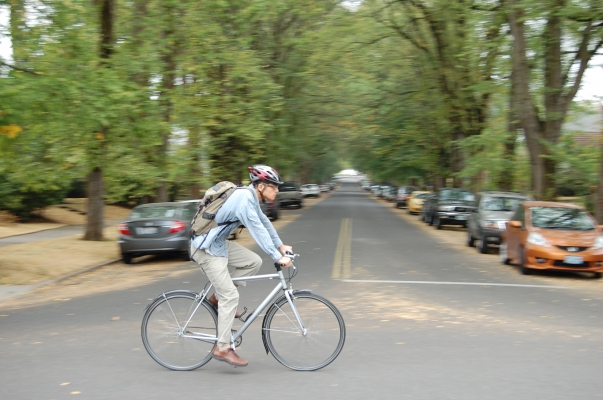Traffic congestion on urban roadways can influence operating costs and cause travel delays.
Portland State University master’s students Nicholas Stoll and Travis Glick will present a paper introducing solutions for locating the sources of congestion at the 2016 annual meeting of the Transportation Research Board.
With their faculty advisor, Miguel Figliozzi, Stoll and Glick looked into using bus GPS data to identify congestion hot spots.
By using high-resolution GPS data to visualize trends in bus behavior and movement, the researchers were able to examine the sources of delay on urban arterials.
These visualizations, which can be in the form of heat maps or speed plots like the one shown here on the right (an application of numerical method applied to a 2,000 ft segment of SE Powell), can be used by transportation agencies to identify locations where improvements are needed. For example, adding a queue jump lane at a congested intersection can improve flow.
The researchers used fine-grained bus data provided by TriMet to create the visualizations. Buses have been used as probes to estimate travel times before, but with...
Read more
